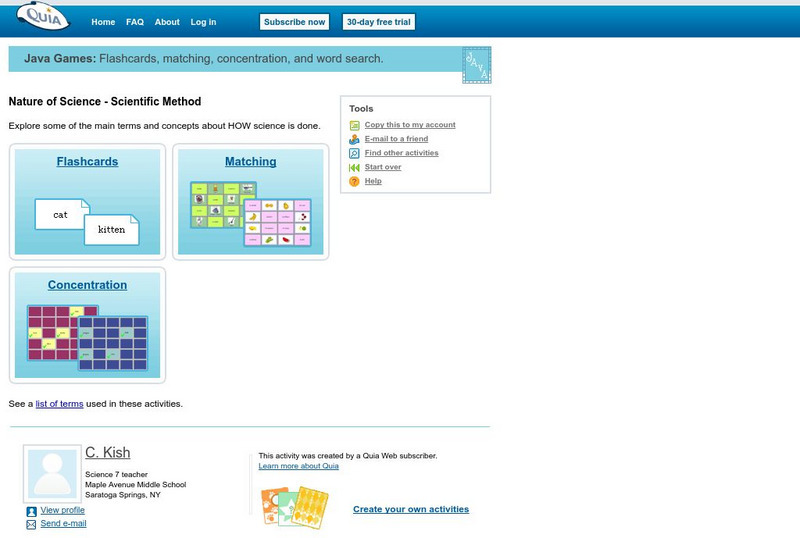Hi, what do you want to do?
University of California
University of California at Berkeley: Understanding Science: Mystery Boxes
An interesting lesson where students collaborate to create a visual image of what the inside of a sealed box looks like. The box has a marble or other type of sphere inside it, as well as partitions and/or ramps. Students come to...
National Endowment for the Humanities
Neh: Edsit Ement: Emily Dickinson & Poetic Imagination: "Leap, Plashless"
This lesson introduces students to Emily Dickinson's poetry which often reveals a child-like fascination with the natural world. Students examine how she writes perceptively of butterflies, birds, and bats and uses lucid metaphors to...
Other
Catching Sunshine
Teachers can enroll their class in this online 'Science-athon.' Students design and build a solar collector, and over a period of several days, collect data and enter it into an online database.
Science Education Resource Center at Carleton College
Serc: Boiling Water With Ice: Effect of Pressure on the Boiling Point of Water
In this activity, which is a discrepant event with guided inquiry, the teacher will go through the steps of boiling water with ice. Through the learners telling and recording WHAT is happening, the teacher is showing the students what...
Polk Brothers Foundation Center for Urban Education at DePaul University
De Paul University: Center for Urban Education: Mousie [Pdf]
"Mousie" is a one page, fictional, reading passage about a boy who caught, tamed, and learned about mice using a scientific method. It is followed by constructed-response questions which require students to provide evidence from the...
Alabama Learning Exchange
Alex: Mystery Powder Investigation
During this lesson plan, young scholars will work individually to identify a mystery powder. Students will have the opportunity to test known powders with different substances and record observations. Young scholars will develop a plan...
PBS
Pbs Teachers: Dead Men's Tales: Splatter Spread
Emulate the work of a forensic scientist by observing the relationship between scatter and distance. Assemble a projectile-hurling device called a potato cannon and analyze the spread pattern of paint soaked projectiles.
Quia
Quia: Nature of Science
Find games and flashcards that students can use to learn the words associated with the scientific method.
Science Education Resource Center at Carleton College
Serc: How Old Is That Thing on That Rock?
Students using magnifying glasses to observe collected fossils, and then make inferences and hypotheses about the age of the specimens.
PBS
Pbs Teachers: Scientific American: Deep Crisis: Salmon Counting
In this lesson, students can explore the techniques of census and population counting by inferring numbers of a virtual population illustrated within a rectangular sampling grid, and observing the accuracy of the technique in relation to...
Science Education Resource Center at Carleton College
Serc: Igneous Rocks Model
Young scholars use samples of four different types of igneous rocks to observe differences in texture, color, and grain size, and then make inferences about the relative cooling histories and silica content associated with each magma type.
McREL International
Mc Rel: Glue Polymer (Whelmer #15 Learning Activity)
An easy to do activity that investigates the basic principles behind chemical bonding. The activity is written in lesson plan format that meets NSES standards.














